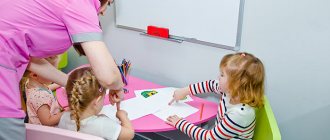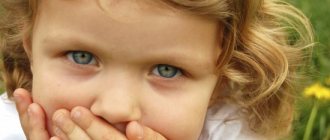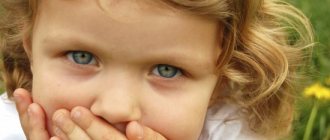Introduction
The problem of studying and correcting specific disorders of written speech (dysgraphia and dyslexia) in children is still one of the most pressing problems in speech therapy. Every year in primary school the number of children with various types of dysgraphia increases. Based on the mechanisms of each type of dysgraphia, the authors who devoted their research to this area of speech therapy (R.I. Lalaeva, V.A. Kovshikov, I.N. Sadovnikova, I.N. Efimenkova, G.G. Misarenko, A.N. Kornev, etc.). They offer various methods of correction work.
A set of manuals designed for working with children with optical dysgraphia is offered to the attention of specialists. The kit includes methodological recommendations, notes from frontal correction classes and two individual workbooks for the child to complete tasks. These manuals represent practical material systematized by the author and are compiled taking into account methodological requirements.
In the optical form of dysgraphia, children experience disturbances in visual perception, analysis and synthesis, as well as motor coordination, inaccurate ideas about shape and color, the size of an object, underdevelopment of memory, spatial perception and ideas, difficulties in optical-spatial analysis, and unformed optical image of a letter. Mixing letters based on kinetic and optical similarity should not be mistaken for ordinary “misprints,” since they are not related to either pronunciation or spelling rules. Such errors can lead to a decrease in the quality of not only writing, but also reading. A child’s writing impairment is persistently systemic, so correctional work should be aimed at the speech system as a whole, and not just at eliminating an isolated defect. The use of manual materials in work will allow the speech therapist to carry out effective correctional work throughout the year and will help to track. dynamics of the state of the child’s written speech.
Correction of agrammatic dysgraphia
Correctional work involves speech therapy principles of work. The main directions of correctional speech therapy: overcoming oral speech defects, development of language analysis and synthesis, word formation, development of spatial-analytical activity with the help of games for spatial orientation, improvement of the intellectual sphere, development of grapho-motor skills.
The formation of the grammatical side of speech is realized through a system of gradually more complex oral and then written exercises. Moreover, each task includes a sample of its implementation and a detailed oral explanation. By regularly completing assignments, students begin to understand language patterns and develop the skill of using grammatical forms correctly.
Correction of agrammatic dysgraphia includes:
Learning not to confuse letters, Album 2, Exercises to correct optical dysgraphia, Mazanova E.V., 2006
Learning not to confuse letters, Album 2, Exercises to correct optical dysgraphia, Mazanova E.V., 2006. Album of exercises No. 2 is included in the set of manuals for overcoming the optical form of dysgraphia in children of primary school age. The use of manual materials in work will allow the speech therapist to carry out effective correctional work throughout the year and help track the dynamics of the child’s written speech. The set of manuals can be used by speech therapists of mass and correctional schools, and students of defectology departments. LAUNDRY "EGOR AND SONS". On the bank of a forest river, under the sign “Laundry - Egor and Sons,” every day early in the morning a family of raccoons sat down and began noisy washing. But one day daddy raccoon came up with the idea to name his sons Yegor, Zakhar and Evgeniy with unusual names. The first began to be called Epiphanius, the second - Elistratus, and the third turned into Eulampius. And the laundry got up. Every morning now began with the raccoon dad remembering the names of his children. But after thinking for five hours and still not remembering anything, he realized that this was an impossible task. He decided to put crosses next to the names of his children, but this did not help him either. He can barely find the cross and the bookmark, but there’s no time to wash it. There are animals walking around in dirty clothes, and the laundry is standing still. One day, while the raccoon dad was not at home, a hedgehog came to visit the raccoons, he asked to give him a book with unfortunate names. The raccoons happily agreed. But the kids were afraid of dad. Then the hedgehog decided to cheat; he asked to wash the book, saying that it was dirty. The cubs set to work on their favorite task, and soon the book was washed. They washed the book so successfully that all the letters were erased. Daddy Raccoon is back. I looked at the kids’ work, felt sad, but had nothing to do, and began calling my children by their usual names: Egor, Evgeniy and Zakhar.
Download the e-book for free in a convenient format, watch and read: - fileskachat.com, fast and free download.
Below you can buy this book at the best price with a discount with delivery throughout Russia. Buy this book
How to open a file
Copyright holders
- djvu - Yandex.Disk. - pdf - Yandex.Disk.
Publication date: 07/23/2021 06:16 UTC
textbook on pedagogy :: pedagogy :: Mazanova :: dysgraphia
See also textbooks, books and educational materials:
- Learning not to confuse sounds, Album 2, Mazanova E.V., 2006
- Learning not to confuse sounds, Album 1, Mazanova E.V., 2006
- Speech therapy, Dysgraphia caused by a violation of language analysis and synthesis, Mazanova E.V., 2006
- Speech therapy, Dysgraphia caused by a violation of language analysis and synthesis, Notebook No. 1, Mazanova B.V., 2006
The following textbooks and books:
- How to engage in self-education, Rubakin N.A., 1962
- Information and communication technologies in education, Dendev B., 2013
- Correction of optical dysgraphia, lesson notes for younger schoolchildren, Mazanova E.V., 2006
- Learning through entertainment, Edutainment camp as a technology of modern education, Golyshev G., Poplavskaya K., Eroshina Y., Mikheeva E., Mytarev I., 2021
Previous articles:
- Programming technology, Basic C/C++ constructs, Educational reference manual, Lipachev E.K., 2012
- Pedagogy and psychology of higher education, Androgogical paradigm, Samoilov V.D., 2017
- Fundamentals of pedagogy and psychology, Divnenko O.V., 2021
- Practice of modern education, Petrusevich A.A., Lorenz V.V., 2012
<< Previous articleNext article >>



